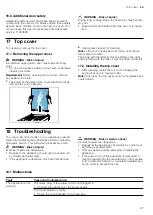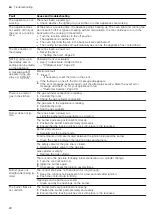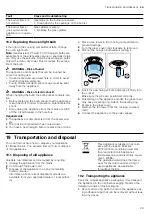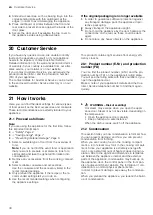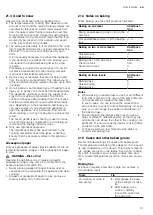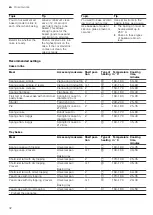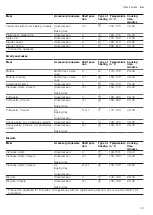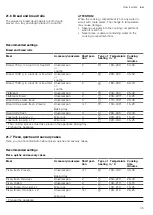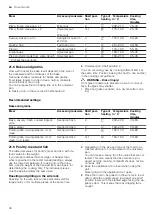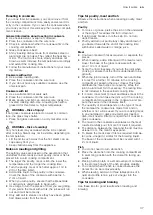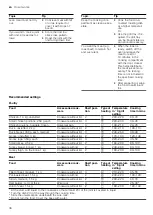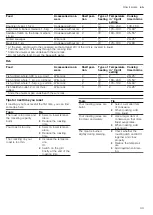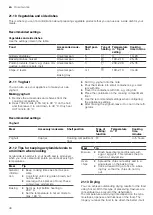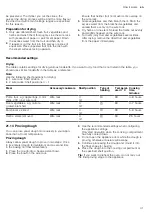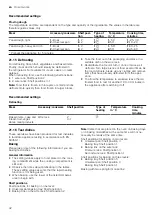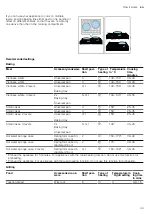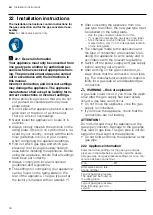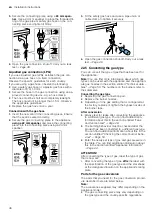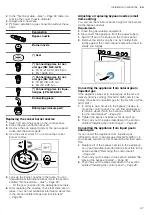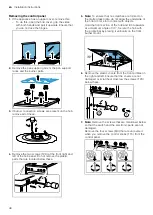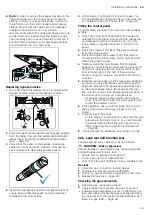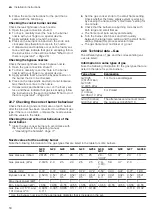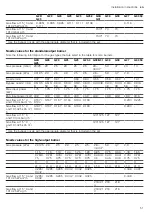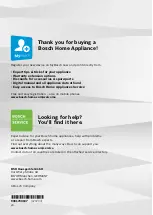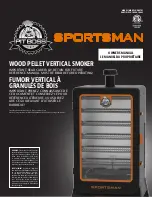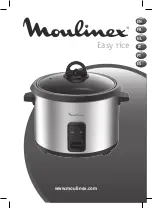
How it works
en
41
be preserved. The thinner you cut the slices, the
quicker the drying process will be and the more flavour
the dried food will retain. Settings ranges are specified
for this reason.
Preparation for drying
1.
Only use unblemished, fresh fruit, vegetables and
herbs and wash them thoroughly. Line the wire rack
with greaseproof paper or parchment paper. Drain
the excess water from the fruit and then dry it.
2.
If required, cut the fruit into thin pieces or slices of
equal size. Place unpeeled fruit onto the dish with
the sliced surfaces facing upwards.
Ensure that neither fruit nor mushrooms overlap on
the wire rack.
3.
Grate vegetables and then blanch them. Drain the
excess water from the blanched vegetables and
spread them evenly on the wire rack.
4.
Dry herbs on the stem. Spread the herbs out evenly
and slightly heaped on the wire rack.
5.
Turn very juicy fruit and vegetables several times.
After drying, remove the dried fruit and vegetables
from the paper immediately.
Recommended settings
Drying
The table contains settings for drying various foodstuffs. If you want to dry food that is not listed in the table, you
should use similar foodstuffs in the table as a reference.
Note:
Use the following shelf positions for drying:
¡
1 wire rack: Shelf position 3
¡
2 wire racks: Shelf positions 3 + 1
Meal
Accessory/cookware
Shelf position
Type of
heating
Temperat-
ure in °C
Cooking
time,
minutes
Pome fruit, e.g. apple rings, 3 mm
thick, 200 g per wire rack
Wire rack
3
3+1
80
4–8 hours
Root vegetables, e.g. carrots,
grated, blanched
Wire rack
3
3+1
80
4–7 hours
Mushrooms, sliced
Wire rack
3
3+1
80
5–8 hours
Herbs, stalks removed
Wire rack
3
3+1
60
2-5 hours
21.14 Proving dough
You can prove yeast dough more quickly in your appli-
ance than at room temperature.
Proving dough
Always allow yeast dough to prove in two steps: Once
in its entirety (dough fermentation) and a second time
in the baking tin (final fermentation).
1.
Place the dough into a heat-resistant bowl.
2.
Place the bowl on the wire rack.
3.
Use the recommended settings when configuring
the appliance settings.
Only start operation when the cooking compartment
has fully cooled down.
4.
Do not open the appliance door while the dough is
proving, otherwise moisture will escape.
5.
Continue processing the dough and mould it into
the final shape for baking.
6.
Place the dough into the cooking compartment at
the specified shelf position.
Tip:
If you want to preheat the oven, do not carry out
the final proving stage in the appliance.

